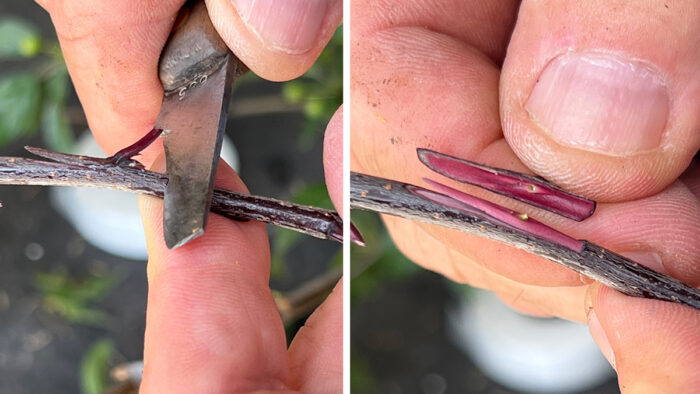
While cleft grafting and side veneer grafting are two of the most commonly used methods in commercial plant production, there are many other forms of grafting that may be used in different circumstances. Here are three more types of grafting, how to do them, and what situations you can use them for.
Splice Grafting
When would you use splice grafting?
Splice grafting is used on herbaceous plants such as vegetables and succulents. People often use splice grafting on heirloom tomatoes, often to improve the performance of the plant. In this instance you would use a tomato with a strong root system or other desirable trait as the understock and the desired heirloom tomato as a scion. This would create an heirloom tomato with improved performance. This method can be used on woody plants such as Japanese maples (Acer palmatum cvs., Zones 5–9; pictured below), but cleft and side veneer grafting are often better options.
How to perform splice grafting
 |
 |
Using a scion and understock of similar size, cut a diagonal cut across the bottom of the scion and a corresponding diagonal cut across the top of the understock. This cut is usually about 30° in hardwood plants and about 45° in softer herbaceous plants.
 |
 |
Join the understock and scion together with a plastic grafting clip. This tool looks like a miniature version of a clothespin and is about ¾ inch long.
Keyhole Grafting
When would you use keyhole grafting?
This type of grafting uses a special hand-held grafting machine to make matching cuts in an understock and scion. It is typically used by smaller-scale operations or by home gardeners to graft all kinds of plants. I have tried out keyhole grafting on grapes, and the results were comparable to those from side-veneer grafting. But this is not a viable method for fast-paced, large-scale nursery production because it is slower for a skilled grafter than making precise cuts with a knife.
How to perform keyhole grafting
 |
 |
Using a keyhole grafting machine, punch a matching keyhole cut (one divot and one protuberance) into a scion and an understock. These are referred to as male and female cuts and look like a key and a lock. It doesn’t matter which type of cut you give to the scion or the understock as long as one is male and one is female.
 |
 |
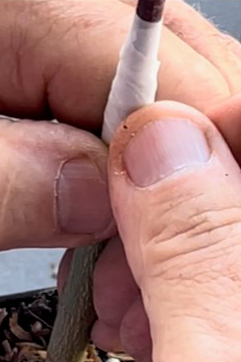 |
Slip the scion and the understock together, and secure the graft with grafting tape. Assuming the scion and understock are very similar in stem caliper, this method can work well.
T-Budding
When would you use T-budding?
T-budding is a common method for producing bareroot trees. Some species prefer one method over the other; however, due to the difficulty of T-budding, many nurseries prefer another method, chip budding, instead.
How to perform T-budding
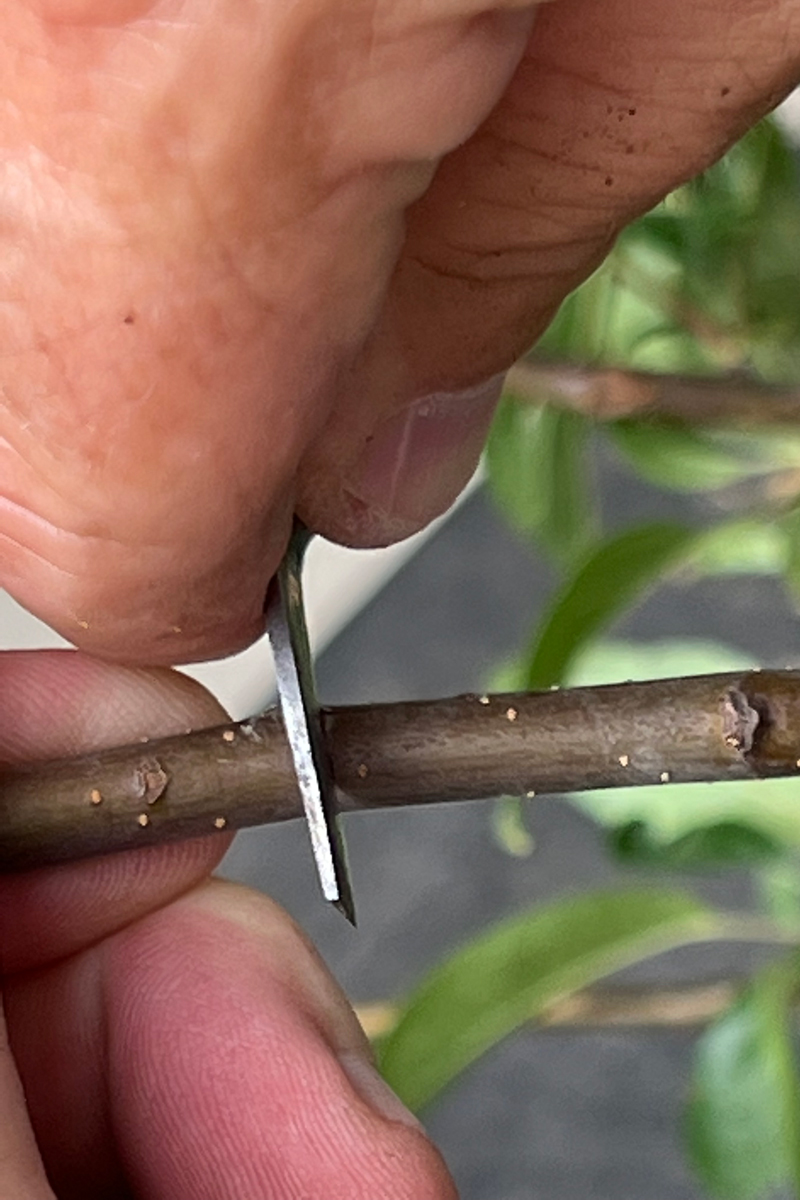 |
 |
Make a vertical 1- to 2-inch cut in the bark of the understock. Then make a horizontal cut ¼ inch long to intersect the vertical cut near its top. If the bark is slipping (peeling back) correctly, peel it back below the horizontal cut, much like a shirt opening with the top two buttons undone.
 |
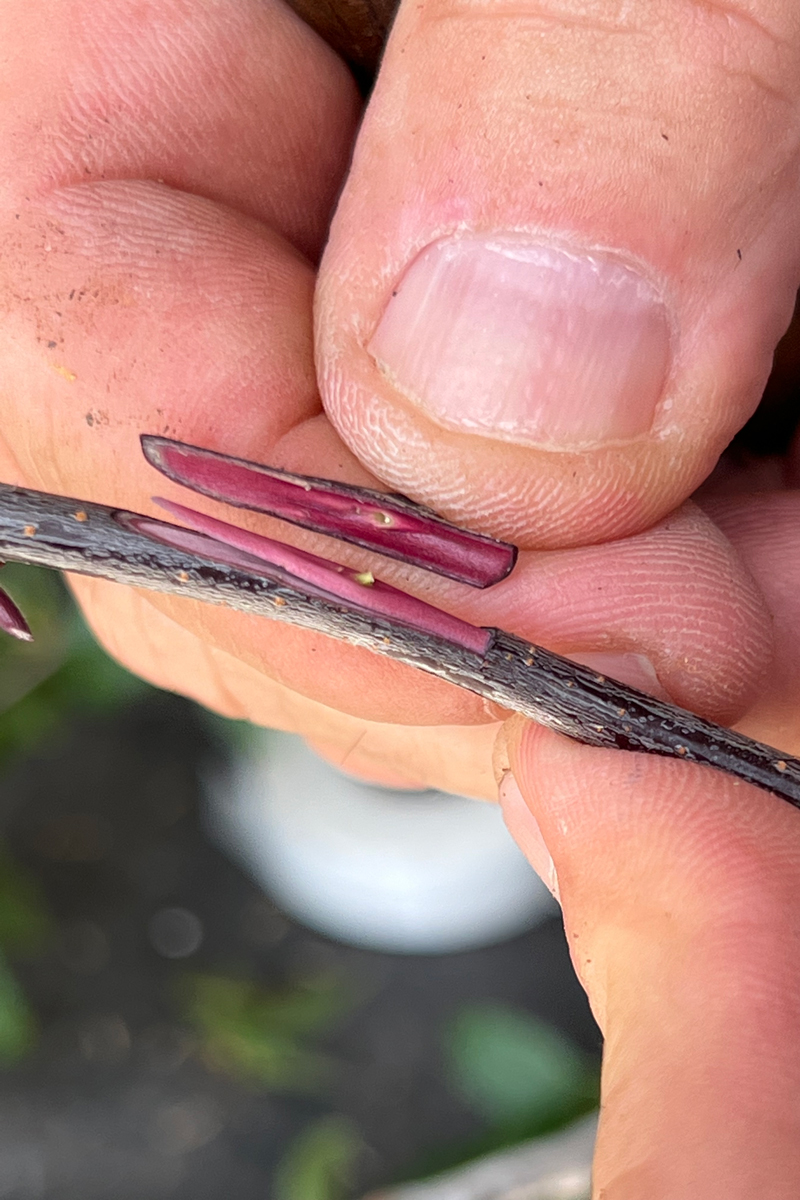 |
Make a cut underneath the scion bud from below the bud to about half an inch above the bud. Then cut a horizontal rounding slice above the bud scion. If the cambium is slipping correctly, the bud and surrounding bark will pop off the scion, producing a bud scion that can slip into the V of the understock cut.
Insert the bud scion into the understock flap and wrap the graft with grafting tape both above and below the bud, leaving the bud sticking out.
No matter which technique you use, the grafted plant must be placed in a low-stress environment to heal after grafting. Read more about how to make a graft successful in my article How Grafting Works.
Brian Decker is a horticulturalist and owner of Decker’s Nursery in Groveport, Ohio, a wholesale nursery that specializes in plant propagation and grafting.
Photos: Pam Dukes, courtesy of Brian Decker



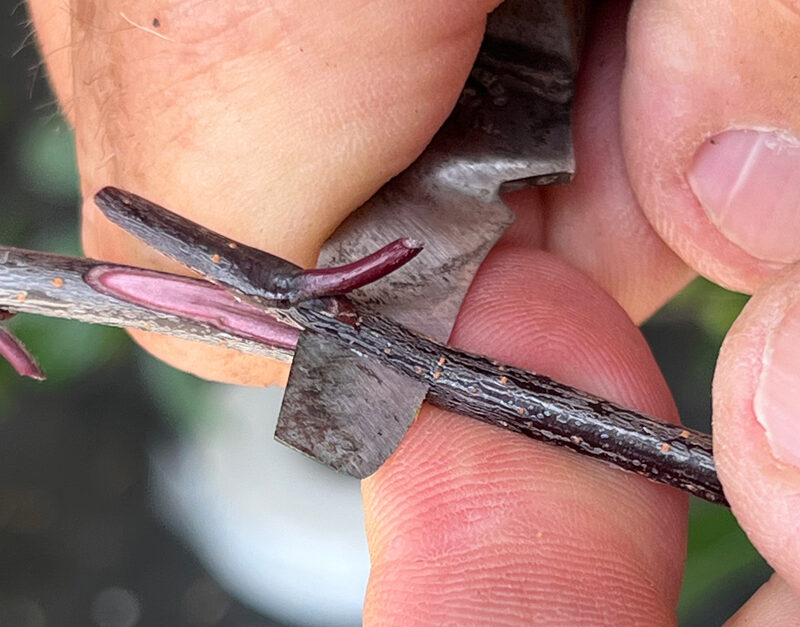
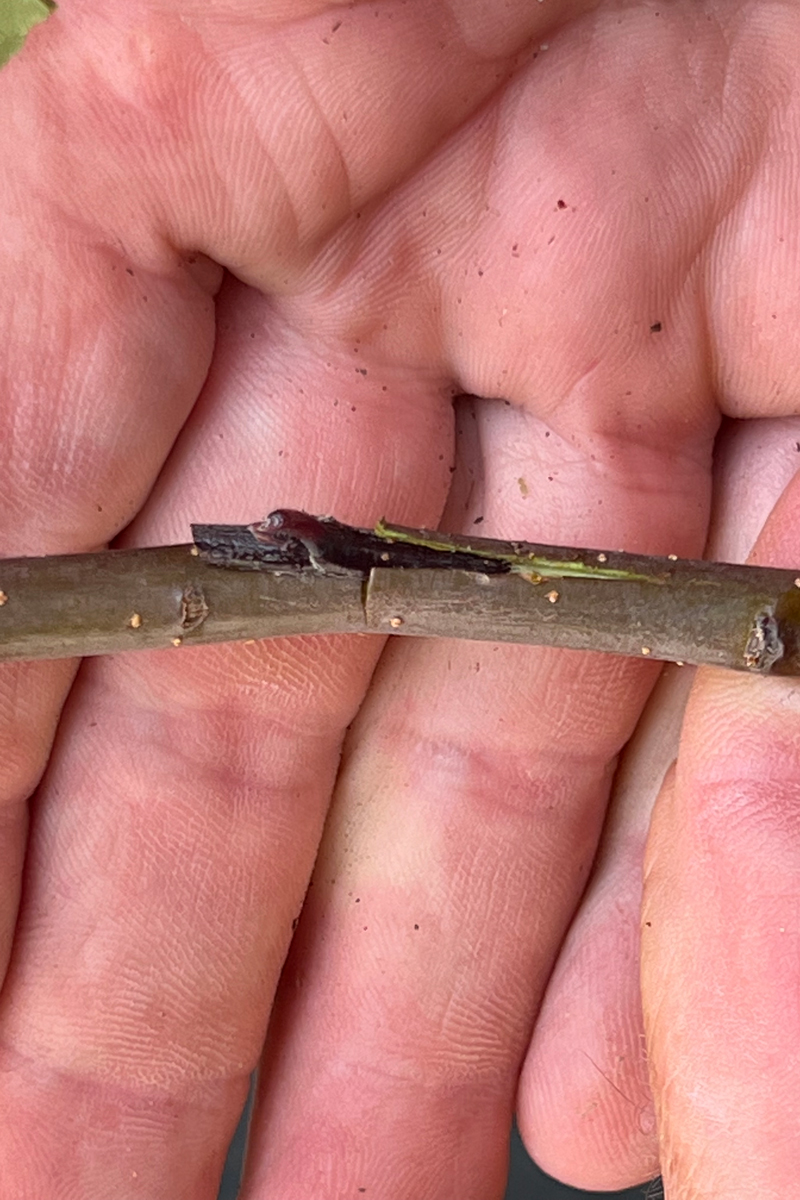


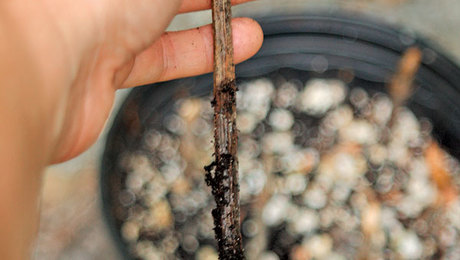













Comments
I have tried many different grafting methods for my Indian Sonic exe rose garden. But failed quite a few times. This time I will try the above methods. Hope to be lucky.
Log in or create an account to post a comment.
Sign up Log in